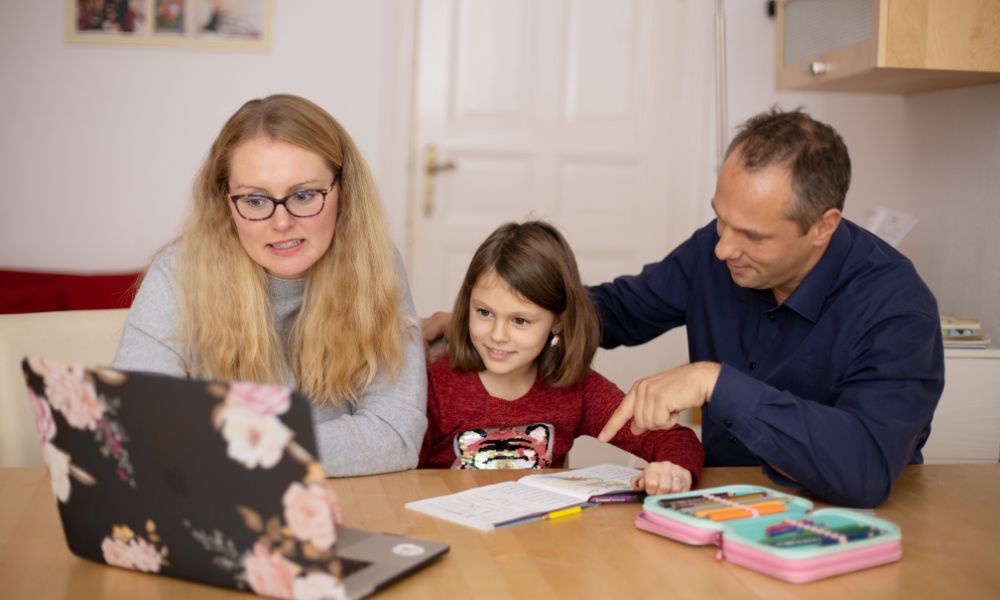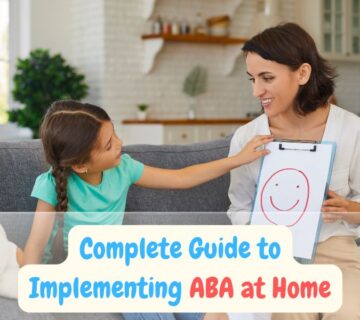The Complete Guide to Parent Training in ABA: Transform Your Child’s Development Through Evidence-Based Strategies
When Sarah Mitchell first learned her son had autism, she felt overwhelmed by the countless therapy options available. However, her journey led to a surprising discovery: parents themselves can become powerful agents of change through Applied Behavior Analysis (ABA) training. This scientific approach, which has transformed countless families’ lives, puts effective behavioral tools directly into parents’ hands.
The integration of parent training in ABA therapy has revolutionized how we approach developmental challenges in children. Research shows that when parents actively participate in ABA training, children make progress up to 47% faster than those receiving only clinical intervention. This comprehensive guide explores how parents can master ABA techniques to create lasting positive changes in their child’s development.
Read More: What Is ABA Therapy? Is it only for Autism? Comprehensive Insights for Families in Atlanta
Introduction to Applied Behavior Analysis (ABA) and Its Significance
Applied Behavior Analysis is a scientific method that examines how environmental factors influence behavior. Developed through the work of John B. Watson and B.F. Skinner in the early 20th century, ABA focuses on measurable outcomes and observable actions. This approach has shown particular effectiveness in helping children with autism spectrum disorders develop essential skills. Parent training programs teach families to implement these techniques at home, creating consistent support across all settings.
Principles of ABA Relevant to Parent Training

The foundation of ABA behavioral principles rests on four key behavioral principles: reinforcement strengthens wanted behaviors through positive outcomes, punishment reduces unwanted behaviors, extinction removes reinforcement to decrease behaviors, and stimulus control shapes responses to specific triggers. Parents learn to break complex behaviors into smaller, manageable steps, making it easier to teach new skills and modify existing behaviors. These techniques allow parents to create structured learning opportunities throughout daily activities.
Read More: Parent’s Guide to ABA Therapy: Understanding Your Essential Role in Treatment Success
The Role of Parents in ABA Intervention
Parents stand at the center of successful ABA parent training programs, extending therapy benefits beyond clinical settings into daily life. When parents actively participate in their child’s ABA program, children show better progress in skill development and behavior management. Parents work alongside ABA professionals to implement strategies consistently at home and in community settings. This partnership approach helps maintain progress over time and builds lasting positive outcomes. Regular communication between parents and therapists creates an effective support system that adapts to the child’s changing needs.
Benefits of Parent Training in ABA
Parent training in ABA produces significant improvements in understanding children’s behavioral patterns. Parents develop stronger communication skills with their children and learn to apply behavioral techniques throughout the day. As parents gain confidence in implementing ABA strategies at home, they report less stress and better coping abilities. The consistent application of ABA methods across different environments leads to better management of challenging behaviors and creates supportive family dynamics. Studies show this sustained parental involvement results in lasting positive changes in children’s development.
Key Components of ABA Parent Training Programs
Parent training programs in ABA combine hands-on instruction, real-time coaching, and consistent feedback systems. ABA professionals work with families to create personalized learning plans that match their schedules, resources, and specific needs. Parents learn to identify behavior triggers and consequences while practicing data collection methods. Training sessions focus on practical skills parents can apply during daily routines, with professionals offering guidance and adjustments based on observed results.
Strategies Taught in ABA Parent Training
Parent training in ABA techniques and principles teaches specific techniques that work in everyday situations. Parents learn to implement positive reinforcement by offering rewards when children display target behaviors. The training includes step-by-step methods for prompting correct responses and gradually reducing assistance as children master skills. Parents also study task analysis – breaking complex activities into smaller, teachable steps. Regular data collection helps parents track their child’s progress through simple observation sheets and behavior logs.

Implementing ABA Strategies in Daily Routines
Parents can blend ABA parent training techniques into common household activities like mealtimes, getting dressed, and bedtime preparation. During breakfast, parents might practice communication skills by having children request specific foods. Bath time becomes an opportunity to work on following multi-step instructions. Parents maintain consistent schedules and set clear expectations throughout daily activities, reinforcing positive behaviors as they occur. Simple modifications to existing routines, such as adding visual schedules or reward systems, help families stick to ABA principles while keeping their natural flow.
Collaboration Between Parents and ABA Professionals
Parent-therapist partnerships form the foundation of effective ABA programs. Regular meetings allow both parties to adjust goals based on the child’s progress. Parents and professionals work together through structured feedback sessions, discussing behavioral data and modifying teaching methods. This team-based method builds on each success while addressing challenges promptly. Weekly check-ins help parents refine their techniques and maintain consistent application of ABA methods at home. Progress tracking sheets and video reviews support clear communication between sessions.
Also Read: Understanding ABA Therapy: A Comprehensive Guide to Evidence-Based Autism Treatment in Atlanta
Overcoming Common Challenges in Parent Training
Parents implementing ABA parent training techniques often face time management hurdles while balancing therapy tasks with daily responsibilities. Setting realistic schedules and identifying specific times for ABA activities helps maintain consistency. When parents feel overwhelmed, breaking sessions into shorter periods proves effective. Support groups connect families facing similar challenges, offering practical solutions and emotional backing. Working with behavior analysis professionals to modify strategies when they’re not producing results prevents discouragement. Small victories deserve recognition – celebrating incremental progress motivates continued effort and reinforces positive outcomes.
Case Studies or Examples of Successful Parent Training Outcomes
A four-year-old with limited verbal communication showed marked improvement after his parents implemented ABA techniques during meal times. Within three months, the child progressed from using single words to forming complete sentences when requesting food. Another family reported an 80% reduction in their seven-year-old’s tantrums after applying consistent behavior management strategies learned through ABA parent training. The parents tracked improvements through daily data collection, noting significant gains in social interactions and independent play skills.

Resources for Ongoing Support and Education in ABA
The Behavior Analyst Certification Board offers extensive materials for parents implementing ABA techniques. Parents can access webinars and online modules through certified ABA providers. Local parent support networks meet regularly to share experiences and problem-solving strategies. Professional journals like the Journal of Applied Behavior Analysis publish research updates, while ABA organizations provide newsletters with practical tips. Many ABA centers maintain lending libraries with books and training materials for home practice.
Also Read: 10 Common Misconceptions About ABA Therapy in Atlanta: Debunking the Myths
Practical Tips for Families to Implement ABA Strategies at Home
Setting up a designated learning space helps children identify when it’s time to practice ABA techniques. Start with clear daily schedules posted at eye level, featuring pictures for non-readers. Keep reinforcement items readily available but out of reach. Track progress using simple charts, marking successful attempts with stickers or checkmarks. When difficulties arise, break tasks into smaller steps and maintain a calm, supportive tone. Celebrate small wins with specific praise like “You put on your shoes by yourself!”
Moving Forward with ABA Parent Training
The journey of parent training in ABA represents more than just learning behavioral techniques; it’s about empowering families to take an active role in their child’s development. As we’ve explored throughout this guide, the combination of professional guidance and parental involvement creates a powerful framework for sustainable progress and meaningful change.
The success stories and research-backed strategies presented here demonstrate that parent training in ABA isn’t just another therapy option – it’s a transformative approach that builds stronger families and brighter futures. By implementing these principles consistently and maintaining open collaboration with ABA professionals, parents can continue to unlock their child’s potential while strengthening their own capabilities as their child’s most important advocate.
Sources
What is applied behavior analysis? Exploring careers in this versatile field: https://www.umassglobal.edu/news-and-events/blog/what-is-applied-behavior-analysis
What is Applied Behavior Analysis (ABA)?: https://www.bmc.org/pediatrics-autism-program/parent-training-everyday-aba
Parent Training: https://www.autismspeaks.org/parent-training
Resource Library – National Autism Center at May Institute: https://nationalautismcenter.org/resource-library/





